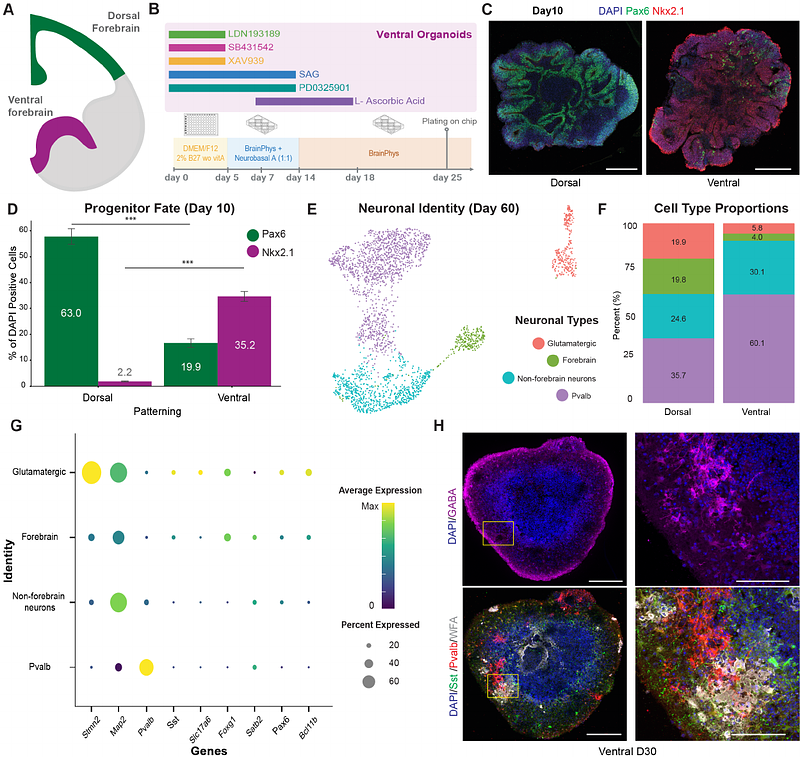Self-Organizing Neural Networks in Organoids Reveal Principles of Forebrain Circuit Assembly

Self-Organizing Neural Networks in Organoids Reveal Principles of Forebrain Circuit Assembly
Hernandez, S.; Schweiger, H. E.; Cline, I.; Kaurala, G. A.; Robbins, A.; Solis, D.; Geng, J.; van der Molen, T.; Reyes, F.; Asogwa, C. N.; Voitiuk, K.; Chini, M.; Rolandi, M.; Salama, S. R.; Colquitt, B. M.; Sharf, T.; Haussler, D.; Teodorescu, M.; Mostajo-Radji, M. A.
AbstractThe mouse cortex is a canonical model for studying how functional neural networks emerge, yet it remains unclear which topological features arise from intrinsic cellular organization versus external regional cues. Mouse forebrain organoids provide a powerful system to investigate these intrinsic mechanisms. We generated dorsal (DF) and ventral (VF) forebrain organoids from mouse pluripotent stem cells and tracked their development using longitudinal electrophysiology. DF organoids showed progressively stronger network-wide correlations, while VF organoids developed more refined activity patterns, enhanced small-world topology, and increased modular organization. These differences emerged without extrinsic inputs and may be driven by the increased generation of Pvalb+ interneurons in VF organoids. Our findings demonstrate how variations in cellular composition influence the self-organization of neural circuits, establishing mouse forebrain organoids as a tractable platform to study how neuronal populations shape cortical network architecture.